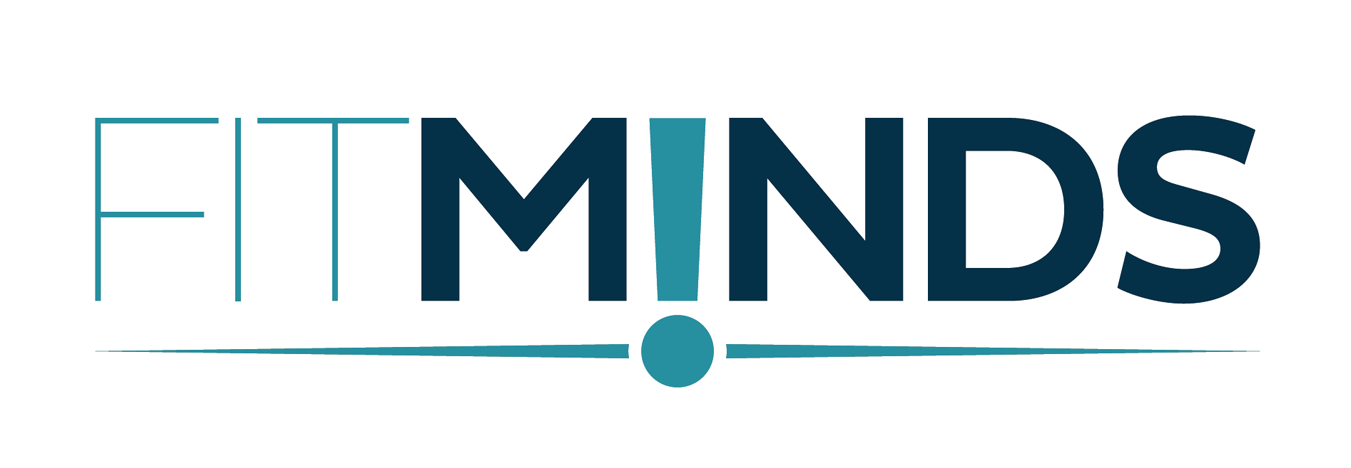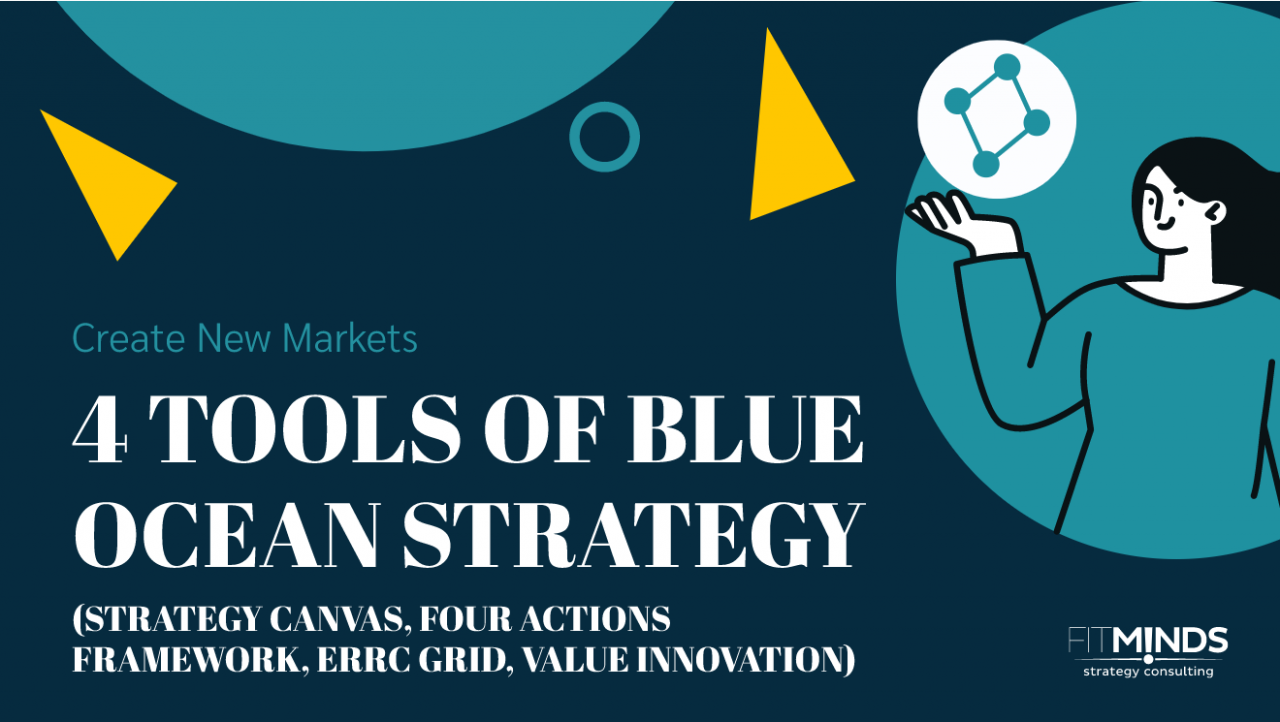Tools That Can Be Used to Create New Markets with the Blue Ocean Strategy
In our previous article, we touched upon the benefit, description, and application of the Blue Ocean Strategy. In this article, we will mention some of the tools that can be used to create new markets: “Strategy Canvas”, “Four Actions Framework”, “ERRC Grid” and “Value Innovation”.
We will use these tools together in this order:
- Using “Strategy Canvas”, we will compare our brand and competitors in terms of the value offered to customers. We will identify our position in the industry.
- Using the “Four Actions Framework”, we will reshape our offerings to customers and develop suggestions for our new strategic position.
- We will visualize the outputs of the “ERRC Grid” and “Four Actions Framework” on a matrix.
- With “Value Innovation”, we will finalize our “Strategy Canvas” using the outputs of “ERRC Grid” and “Four Actions Framework”.
Let’s deep dive into the tools and see how they work while creating a blues ocean strategy.
1. Strategy Canvas
“Strategy Canvas” allows you to compare your brand and competitors in terms of the value offered to customers and determine your position in the industry. To create it, perform the following steps to prepare the chart below:
- List the benefits that your industry offers to customers. According to the Blue Ocean Strategy, it is very important that these benefits cover all three aspects: your product, the services that your product offers, and supply. In short, do not be limited to the direct benefits of using your product.
- Place your brand and competitor in the perception of customers in terms of each benefit.
- Identify at which points you are behind your competitors, at which points you are average, and at which points you are superior to your competitors.
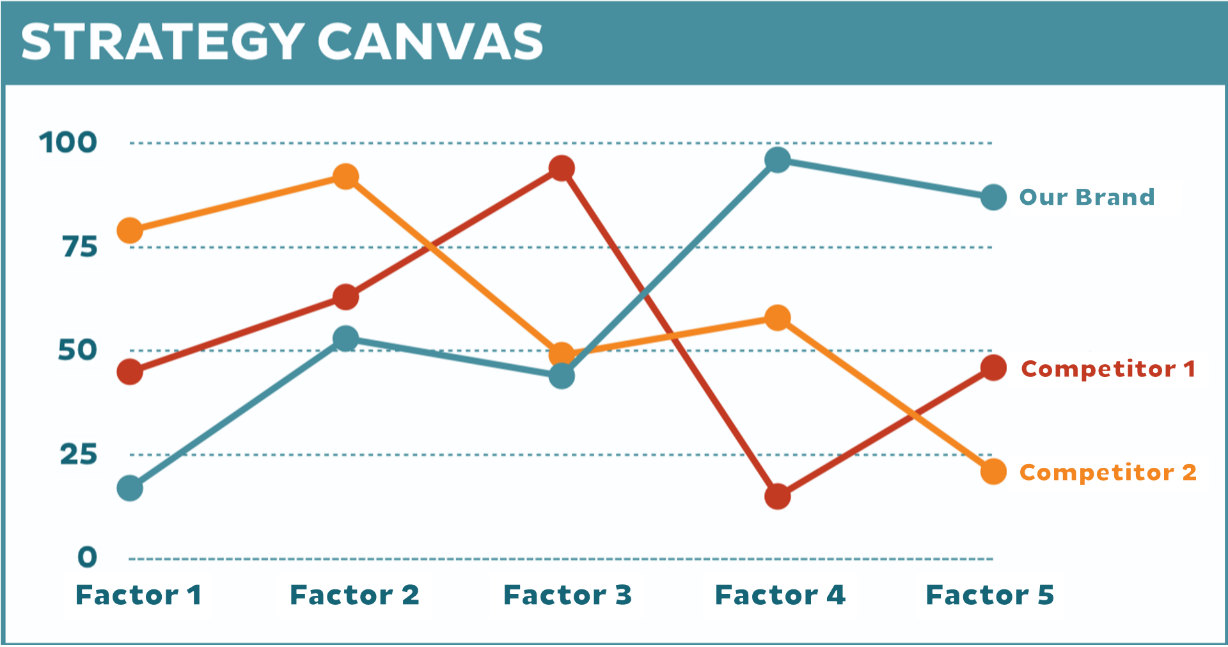
2. Four Actions Framework
With “Strategy Canvas”, you identified which benefits you offer are behind competitors, which are average, and which are superior to competitors. The most crucial point of the Blue Ocean Strategy starts right here. The classic approach is trying to improve the points you are behind your competitors. However, the Blue Ocean Strategy allows you to ask the following 4 questions with its “Four Actions Framework”.
- Which factors that the industry has long competed on should be eliminated?
- Which factor should be reduced well below the industry’s standards?
- Which factors should be raised well above the industry’s standard?
- Which factors should be created that the industry has never offered?
With this approach, the Blue Ocean Strategy forces us to move away from the logic of “benchmarking” focused on gaining market share by making minor improvements in our product. When looking for the answers to these four questions, it requires us to understand what the customers really value and what they don’t value instead of what competitors are doing. Therefore, rich customer insights are indispensable at every stage of creating a new market.
3. ERRC Grid
Rather than being a new tool, “ERRC Grid” is the visualization of the “Four Action Framework” on a matrix as shown below.
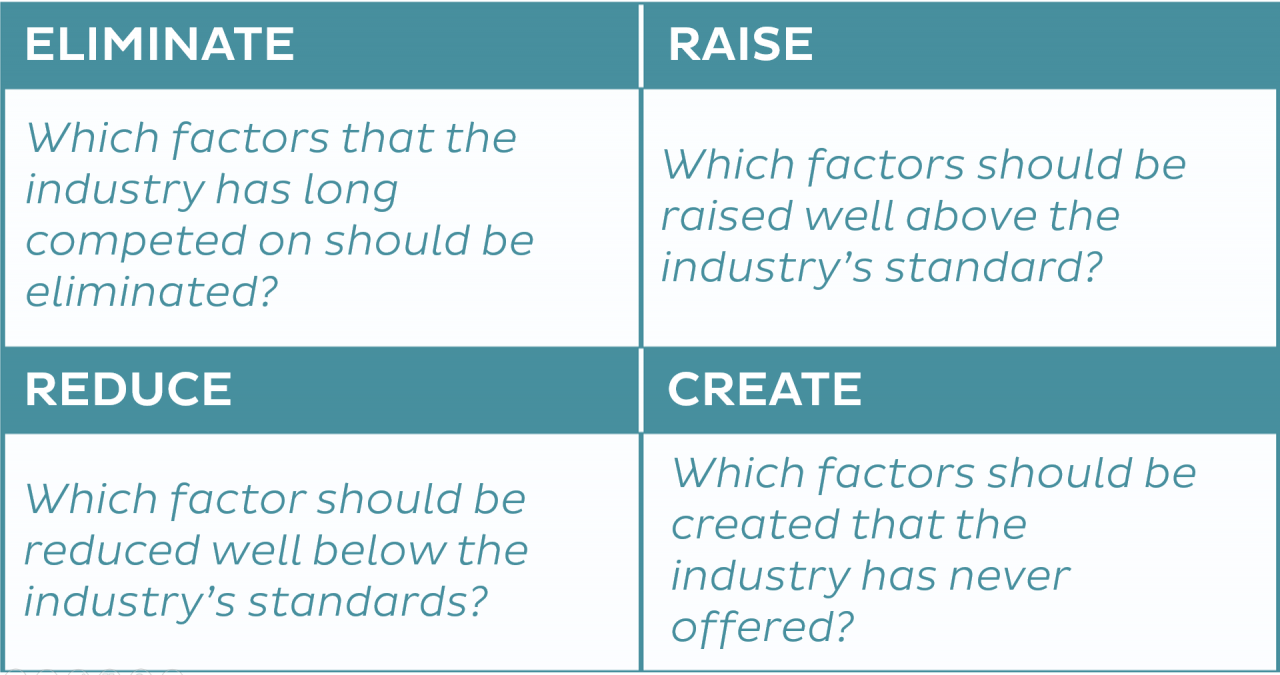
4. Value Innovation
Add the new refined benefit set in the “ERRC Grid” to the existing “Strategy Canvas” as follows. The place where you realize “Value Innovation” is exactly the benefits area consisting of superior or new areas you offer. In the “Four Actions Framework” study, if rich customer insights were able to lead you to define a new benefit, then you are oriented towards a new area that makes competition irrelevant. As stated above, the Blue Ocean Strategy identifies that 3 aspects are included in the most effective examples of “creating a new market” and suggests that the benefits you will offer should be based on “product-service-supply”.
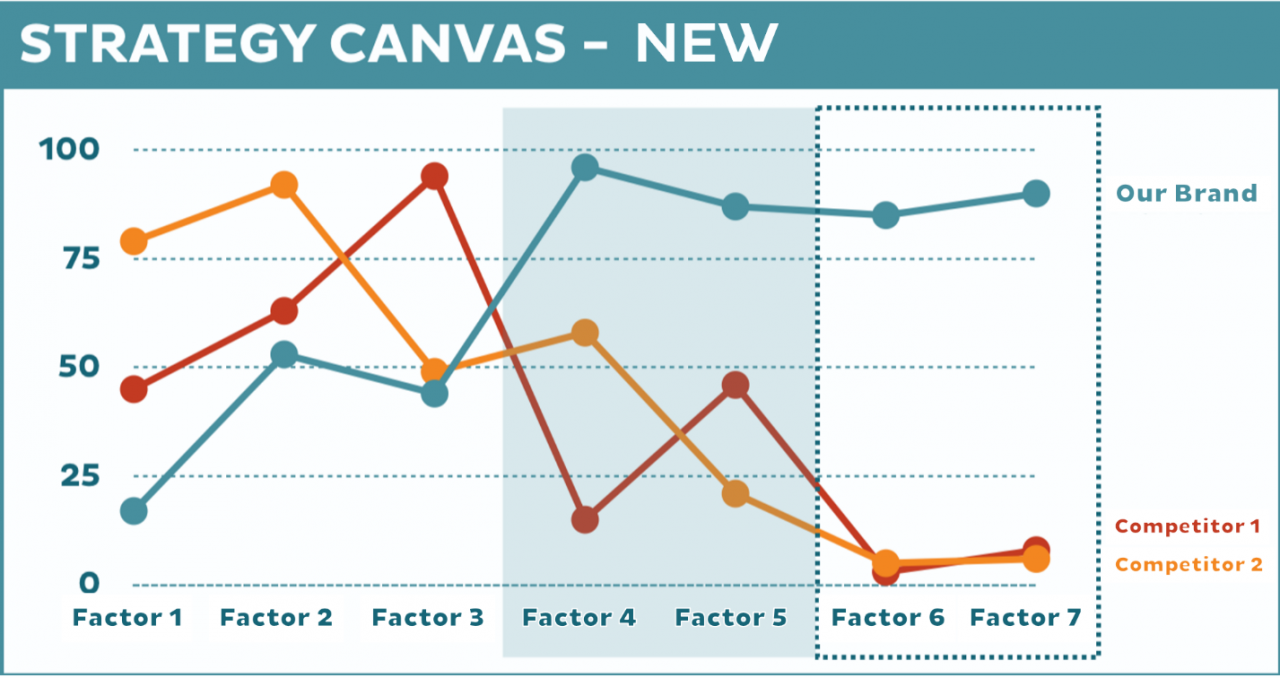
An Example to Blue Ocean Strategy
Authors’ example of how economy-class Formule 1 hotels created the new market, in their article published on HBR’s July-August 2004 issue.
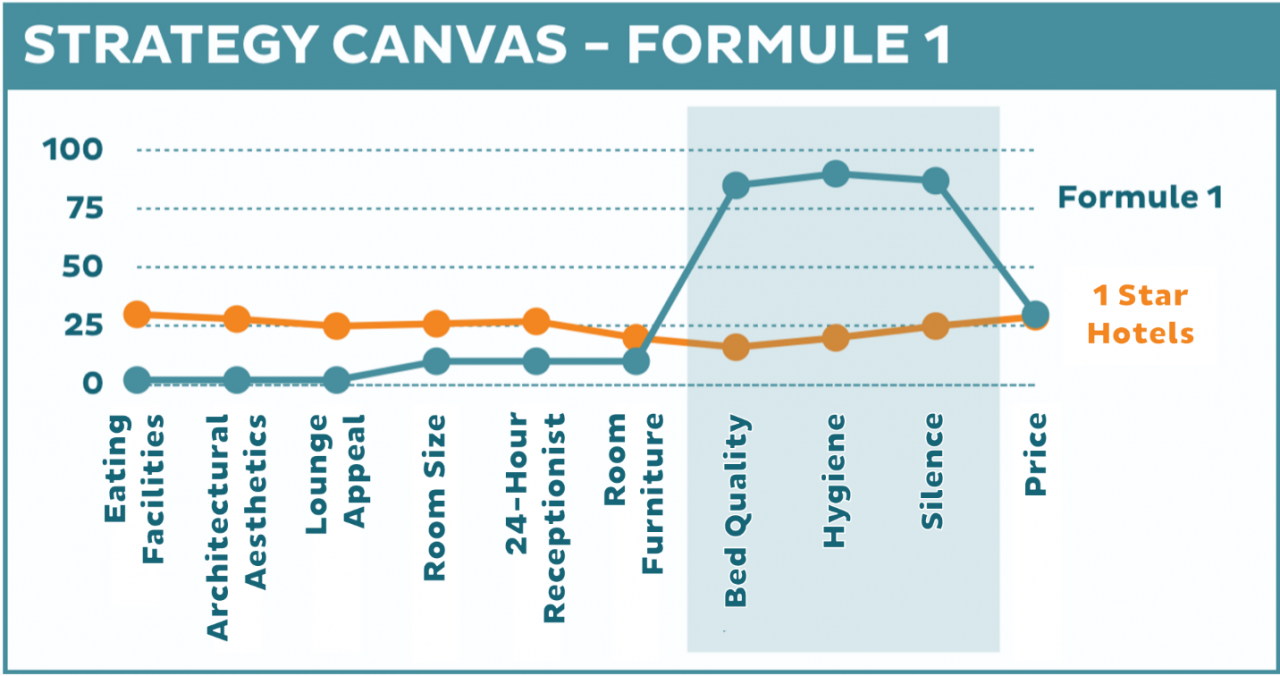
Contact us to redefine your company’s main strategy that will create new markets and make competitors irrelevant.

